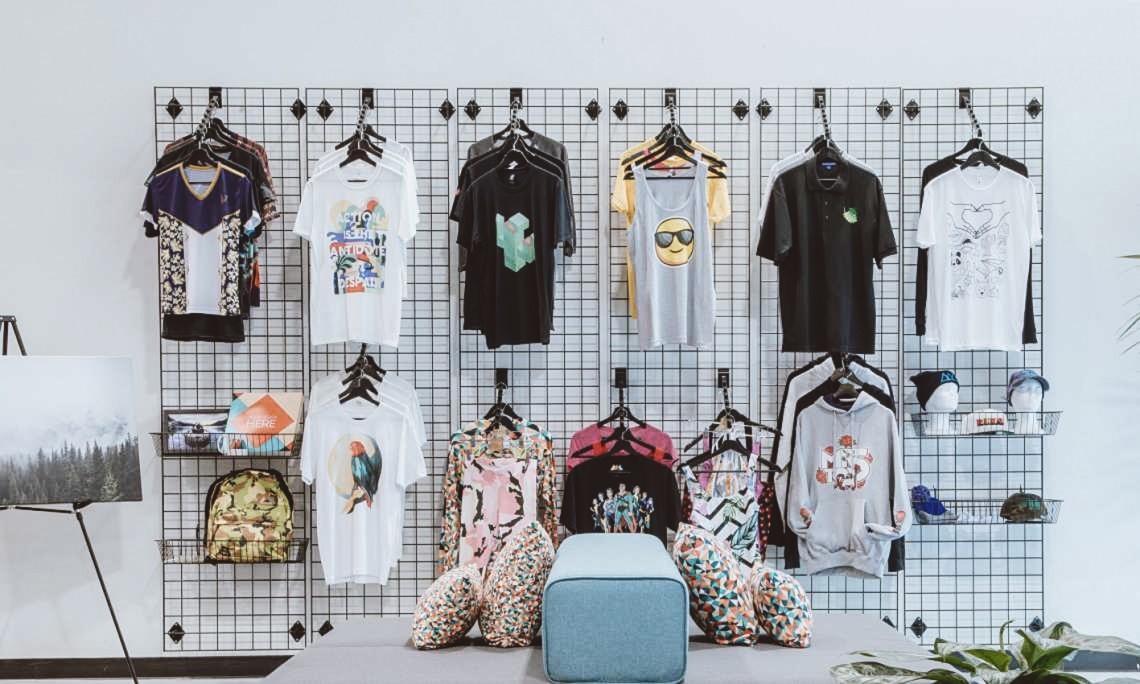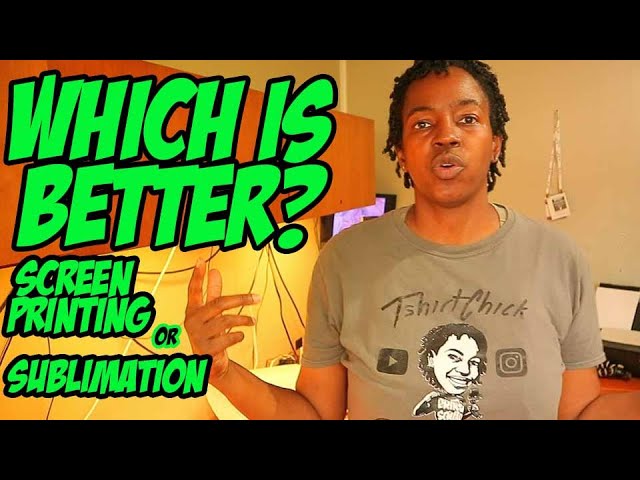Unknown Facts About Tx Tees
Unknown Facts About Tx Tees
Blog Article
The Single Strategy To Use For Tx Tees
Table of ContentsThe 45-Second Trick For Tx Tees5 Simple Techniques For Tx TeesFascination About Tx TeesWhat Does Tx Tees Do?Getting The Tx Tees To WorkNot known Details About Tx Tees Our Tx Tees Ideas
Include up other prices, like the number of energies it takes to run the store and the cost of ink and solution per layout. Take the print listed below.The solution should just be a couple of cents considering that you 'd only require to layer one display for this job. How much should you bill per tee shirt to make a profit? Normally, printers attempt to make up to 45% earnings on a print work. Here's a table to aid you determine that: total price per thing percent of desired earnings as a decimal (example:.25 or.45) revenue made per product per job Now let's speak about the earnings of DTF.

With DTF, you can publish a handful of shirts, or simply one. Both screen printing and DTF have their specific niches in the globe.
How Tx Tees can Save You Time, Stress, and Money.
The very best way to understand? Ask about and see what printing shop like your own are doing. custom cap printing. Attempt both out and see which you like much better
When you're choosing what type of printing method to make use of for printing your artwork layouts on your garments, it's essential that you know the differences between these two methods so you can make the most of results while reducing prices. Screen printing is one of the most generally used strategy for printing styles on fabrics.
DTG printing is additionally called place or direct to garment printing due to the fact that it publishes just what is required instead of making a display as screen printers do. https://filesharingtalk.com/members/594250-txtees02?tab=aboutme&simple=1. Screen printing functions by screen filler squeegee display printing ink screen mesh display, then transferring the picture to garment utilizing warm and/or stress
The DTG printer utilizes special dye-sublimation inks that are used right into a pre-designed picture by an electronic printing system. The inks come to be part of the textile, permitting lively colors and outstanding detail. It's also known as place or straight to garment printing because it publishes only what is needed rather than making a display as screen printers do.
Indicators on Tx Tees You Should Know
It's much quicker - you can print a fullcolor image in minutes, as opposed to hours for display printing. Second, there's no set up time or expenses included - you can print any layout you like, without having to develop a screen. Third, there's no waste - since screen printers display print one design each time, they have to evaluate each color individually.
The paper is really pricey and can only be utilized once. Once it's published on, it has to be disposed of. - The initial acquisition price is less than the in advance financial investment of DTG printers- You can print multi-color designs one display each time rather of needing to print each shade independently like DTG printing.

The Definitive Guide to Tx Tees
Nevertheless, rather than using display mesh as display printers do, dye sublimation printers use laser modern technology to transfer your pictures onto garments or paper. A warm procedure transfers the dye from its solid-state straight right into the gas phase which consequently integrates it onto textile substrates when they are swiftly heated to high temperature levels under high stress.
Sublimation printing is environmentally friendly. It utilizes much less water than screenprinting, and since it doesn't involve using harmful solvents, it's secure for all kinds of garments. The see this website color sublimation inks are additionally unsmelling when treated, unlike display printers that use hazardous chemicals during the screen printing process that leave an unpleasant odor.
They likewise save money on pricey tools like exposure units considering that color sublimation printers don't call for a UV exposure device or a flash treatment oven that is usually utilized in display printing (custom monograming). What is straight to garment printing (DTG Printing)? DTG printing is a digital screenprinting procedure that publishes directly onto textile making use of specialized inkjet printers
An Unbiased View of Tx Tees
DTG printing offers lots of advantages over traditional screenprinting, including the capability to publish photo quality photos, higher shade vibrancy, and the ability to publish layouts on darker materials. DTG printers function by heating the fabric ink until it becomes a gas. The gas after that permeates the fabric, bonding with the fibers to create an irreversible print.

Display printers merely prepare their display then begin printing until they run out of product or ink.- There is a variety of skilled display printers around the world, which can be helpful for novices. - It's a slower process - screen printers typically have to wait for the ink to dry prior to they can print the following shade- Display printers require manual work, so there's a higher learning curve and it takes longer to generate a premium design- Screen printing isn't as accurate as DTG printing, so you may get some "blood loss" of shades from one part of the image onto one more otherwise done properly.
10 Simple Techniques For Tx Tees
Nevertheless, as opposed to using display mesh as screen printers do, dye sublimation printers make use of laser innovation to move your photos onto garments or paper. A heat procedure moves the dye from its solid-state straight right into the gas phase which consequently integrates it onto fabric substratums when they are swiftly heated to heats under high pressure.
Sublimation printing is environment-friendly. It uses much less water than screenprinting, and due to the fact that it doesn't involve using dangerous solvents, it's secure for all kinds of clothing. The color sublimation inks are additionally odorless when treated, unlike display printers that make use of harmful chemicals during the screen printing procedure that leave an undesirable smell.
They also save money on expensive devices like direct exposure devices since dye sublimation printers don't need a UV direct exposure system or a flash treatment stove that is typically used in screen printing. What is direct to garment printing (DTG Printing)? DTG printing is a digital screenprinting process that prints directly onto material making use of specialized inkjet printers.
The Main Principles Of Tx Tees
DTG printing provides numerous benefits over traditional screenprinting, consisting of the capacity to publish photographic quality images, better shade vibrancy, and the capability to print layouts on darker fabrics. DTG printers function by warming the textile ink until it transforms right into a gas. The gas then permeates the textile, bonding with the fibers to produce a permanent print.
Report this page